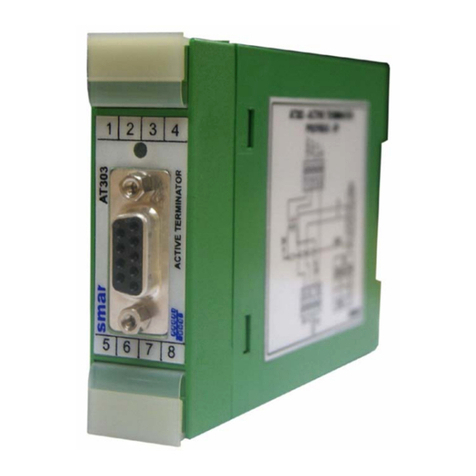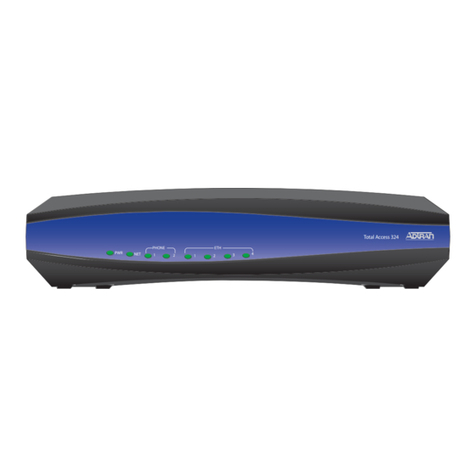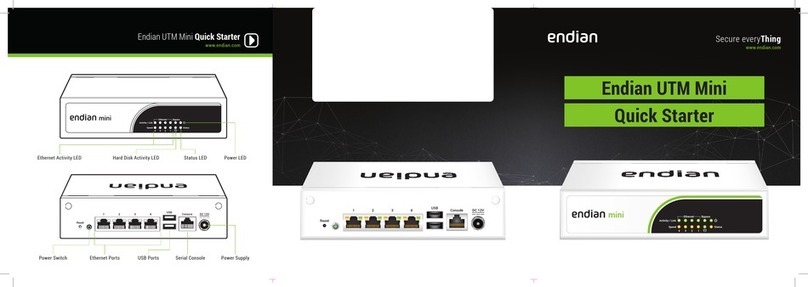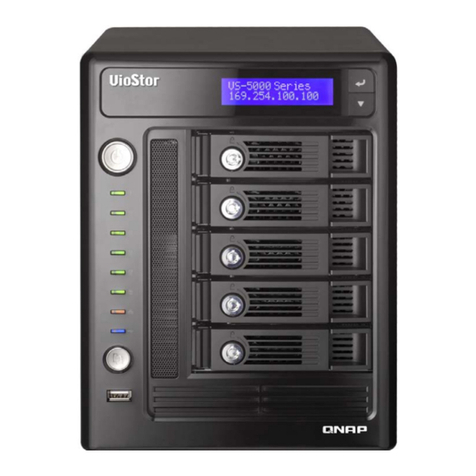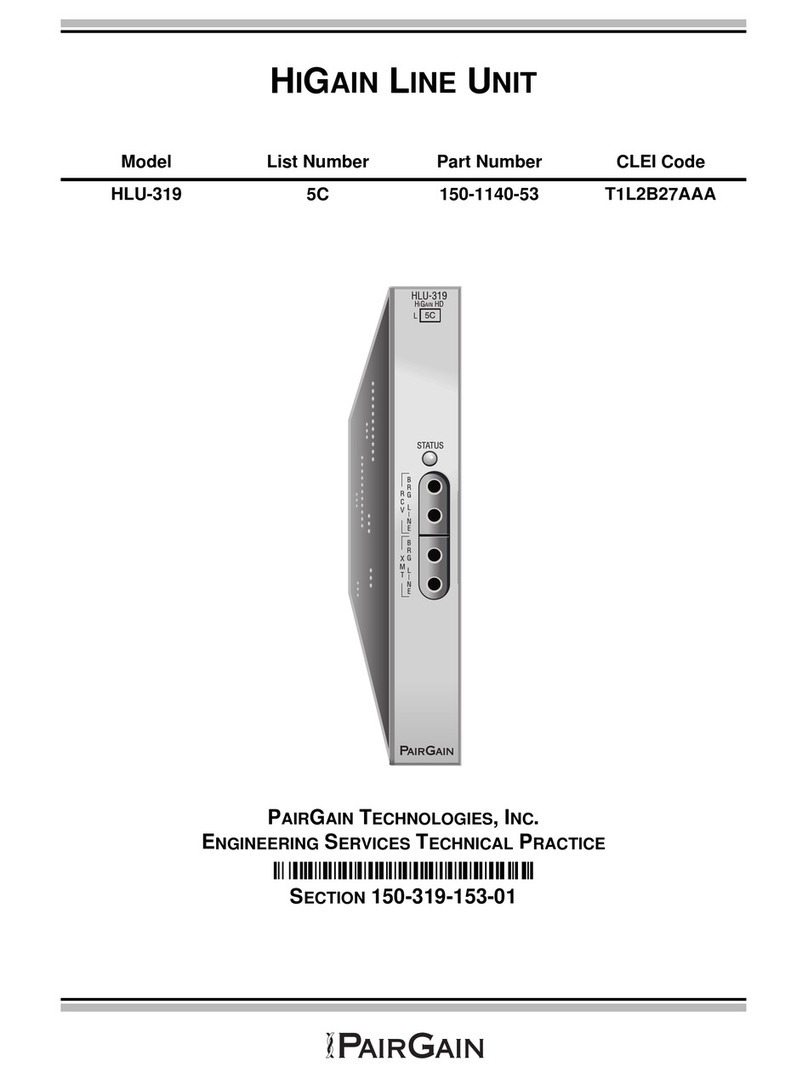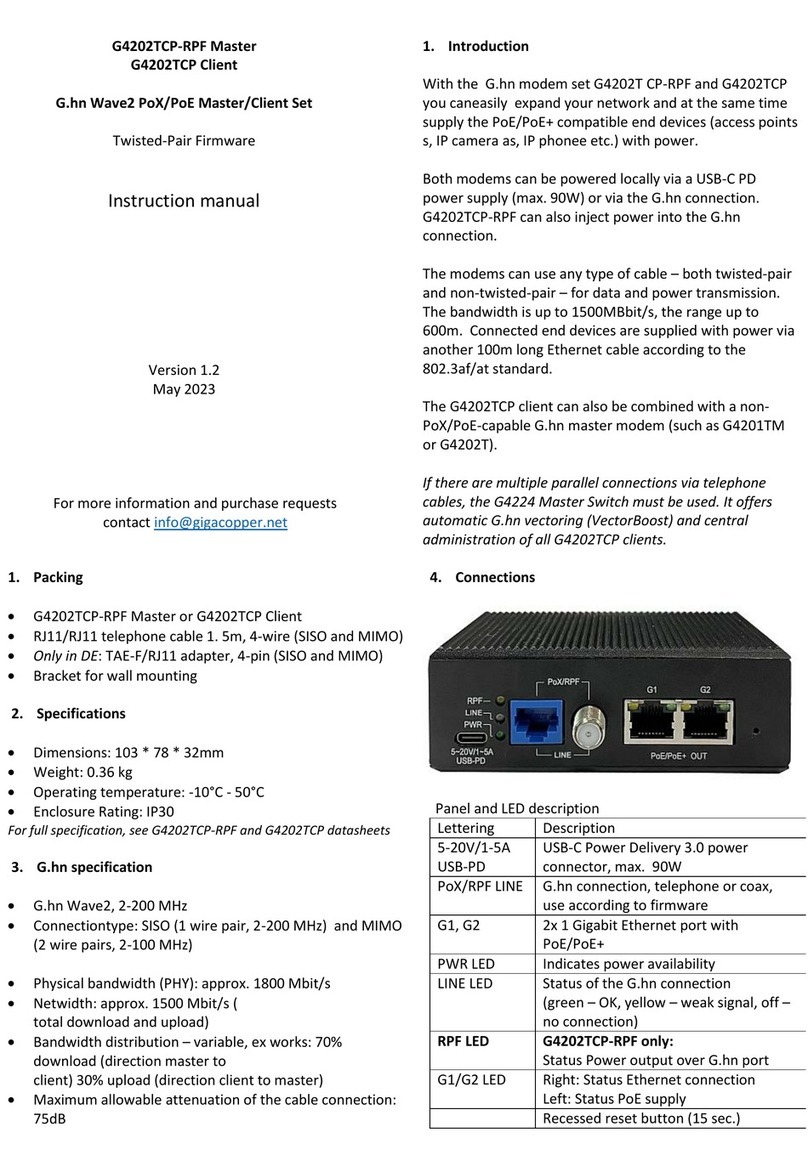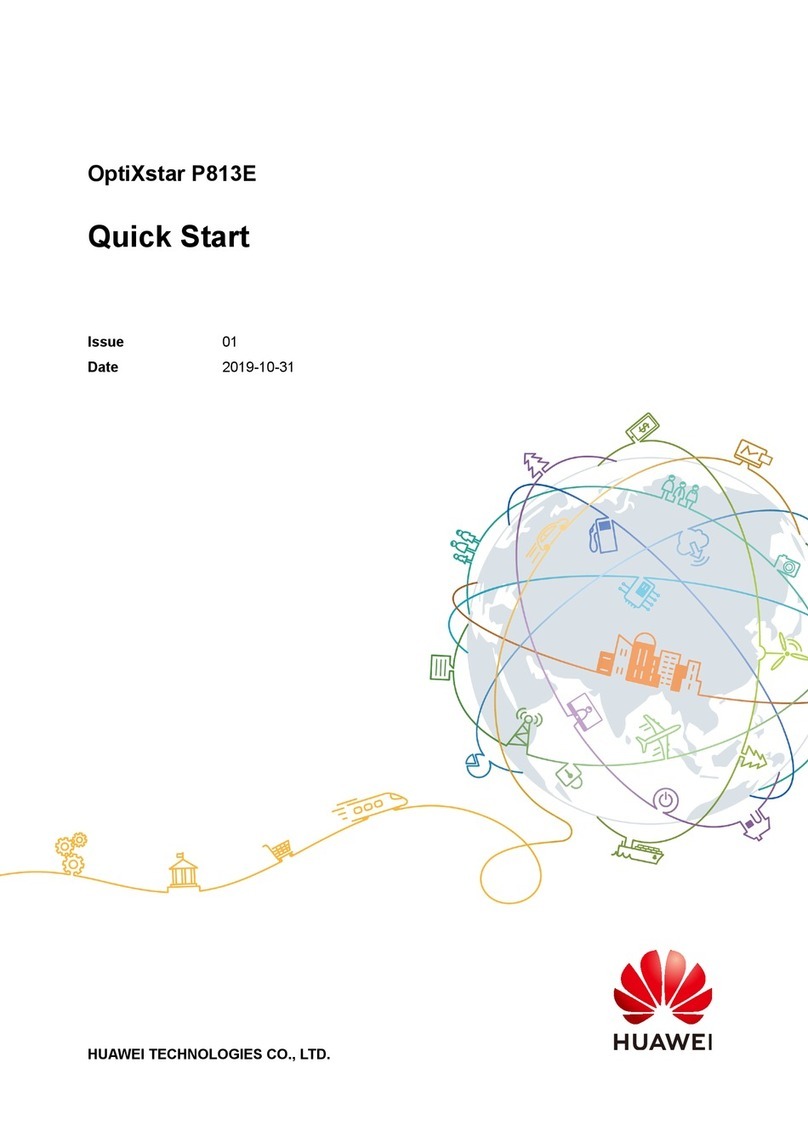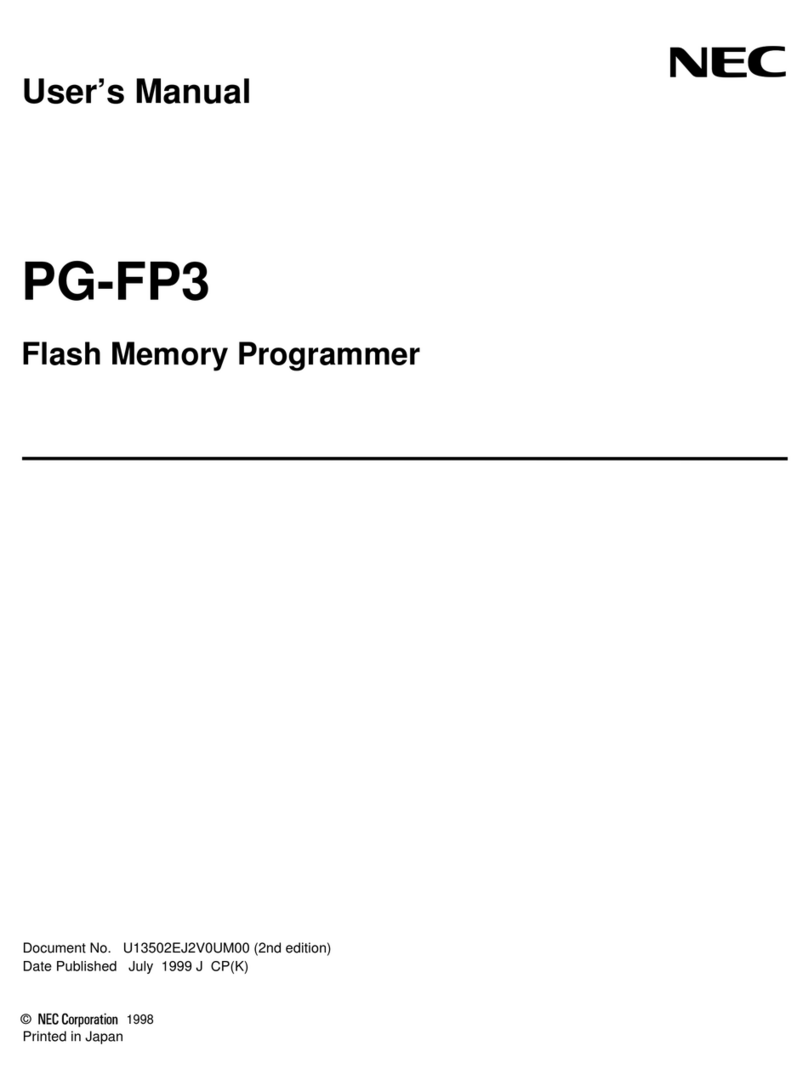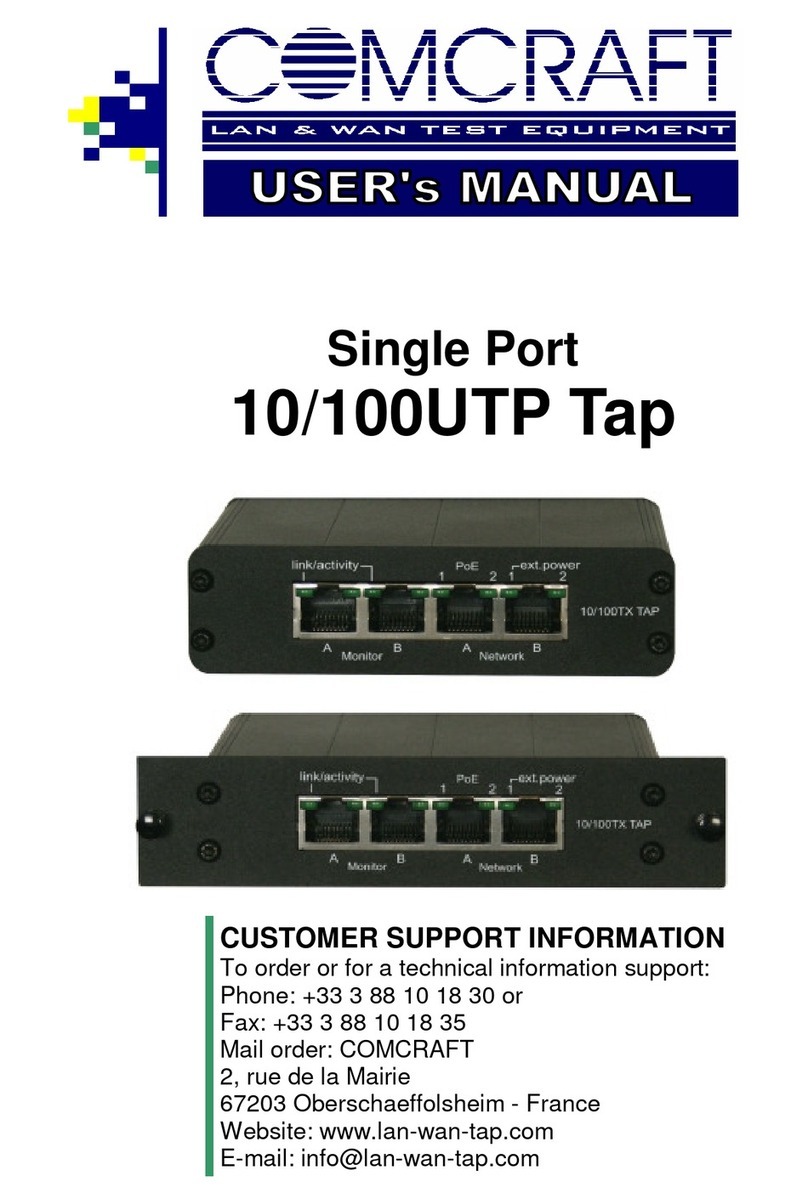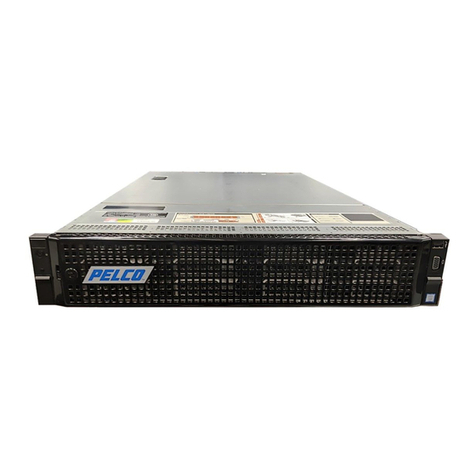SMAR MB-700 User manual

MB7 0 0 ME

web: www.smar.com/contactus.asp
www.smar.com
Specifications and information are subject to change without notice.
Up-to-date address information is available on our website.
sma
r

Introduction
III
INTRODUCTION
The MB-700 is a powerful multifunction module from LC700 family that can be used isolated or
integrated to the SYSTEM302. The module can perform multi function in MODBUS protocol like
gateway MODBUS TCP/IP and MODBUS RTU, MODBUS data concentrator and Peer-to-Peer
communication between MODBUS slave devices.
These are some of MB-700 characteristics:
•Tight integration with intelligent devices and software from multiple manufacturers due to use of
open standards as OPC Server and Modbus TCP/IP and RTU;
•Totally integrated unit having the following functions: interface, gateway, linking device, bridge
and MODBUS data concentrator;
•As Gateway Modbus, the MB-700 can work in both directions: as Gateway TCP/IP to Serial or
Serial to TCP;
•As Data Concentrator the module can concentrate the data from the slaves in the serial and
provide the data to TCP/IP via OPC or MODBUS TCP/IP;
•As Peer-to-Peer can exchange MODBUS data between slaves connected in the TCP/IP, Serial
or both Medias; and
•Full redundancy and fault isolation for high safety and uninterrupted operation.

MB-700 – User’s Manual
IV

Table of Contents
V
TABLE OF CONTENTS
INTRODUCTION...................................................................................................................................III
GLOSSARY......................................................................................................................................... IX
REFERENCES................................................................................................................................... XIII
Chapter 1 - OVERVIEW.....................................................................................................................1.1
Main Characteristics .....................................................................................................................................1.2
System Integration........................................................................................................................................1.3
Power Supply – PS-AC-R ...........................................................................................................................................1.3
Processor Module – MB-700.......................................................................................................................................1.3
Open Protocols............................................................................................................................................................1.3
Configuration...............................................................................................................................................................1.3
Supervision .................................................................................................................................................................1.3
Chapter 2 - INSTALLATION ..............................................................................................................2.1
Fixing Racks and Modules...........................................................................................................................2.1
Installing the Module in the Rack ................................................................................................................2.2
Installing the Rack in the DIN Rail...............................................................................................................2.3
Adding Racks (Local I/O Expansion) ..........................................................................................................2.3
TIPS for the Assembly.................................................................................................................................................2.3
Installing the Hardware.................................................................................................................................2.3
Using the Fault Indication............................................................................................................................................2.4
Installing the System302 ..............................................................................................................................2.4
Getting the License for DFI OLE Server......................................................................................................2.5
Connecting the MB-700 to the Subnet ........................................................................................................2.5
Chapter 3 - CONFIGURATION ..........................................................................................................3.1
Updating the Firmware .................................................................................................................................3.1
Setting the MB-700 through Software.........................................................................................................3.6
Creating a New Plant ..................................................................................................................................................3.7
Chapter 4 - MB-700 FUNCTION BLOCKS........................................................................................4.1
Block CCCF- Concentrate Configuration....................................................................................................4.1
Overview.....................................................................................................................................................................4.1
Description ..................................................................................................................................................................4.1
Direction of the Data Flow...........................................................................................................................................4.1
MODBUS Addresses...................................................................................................................................................4.2
Configuring the Serial Media.......................................................................................................................................4.2
Configuring the TCP Media.........................................................................................................................................4.3
Scan Cycle..................................................................................................................................................................4.3
Parameters..................................................................................................................................................................4.4
Block CCSM - Concentrate Supervision Master ........................................................................................4.6
Overview.....................................................................................................................................................................4.6
Description ..................................................................................................................................................................4.6
A - Configuring Points to be Supervised......................................................................................................................4.6
B - Data Supervision ...................................................................................................................................................4.7
C - Supervision Status.................................................................................................................................................4.8
Parameters..................................................................................................................................................................4.8
Block CCCM- Concentrate Control Master...............................................................................................4.10
Overview...................................................................................................................................................................4.10
Schematic .................................................................................................................................................................4.10
Description ................................................................................................................................................................4.10
A - Functioning of a Communication Peer-to-peer in a MODBUS Device.................................................................4.10
B - Addressing...........................................................................................................................................................4.12
C - Monitoring Data...................................................................................................................................................4.13
D - Supervision Status...............................................................................................................................................4.14
Parameters................................................................................................................................................................4.14

MB-700 – User’s Manual
VI
Block CCDL – Concentrate Data Logger ..................................................................................................4.16
Overview...................................................................................................................................................................4.16
Description ................................................................................................................................................................4.16
Parameters................................................................................................................................................................4.17
Chapter 5 - ADDING MODBUS TO THE MB-700 .............................................................................5.1
MB-700 as Serial MODBUS Master..............................................................................................................5.1
Scenario......................................................................................................................................................................5.1
Description ..................................................................................................................................................................5.1
Off LINE Configuration................................................................................................................................................5.2
On Line Configuration ...............................................................................................................................................5.12
MB-700 as a TCP/IP Master ........................................................................................................................5.12
Description ................................................................................................................................................................5.12
1 - MB-700 working as Bypass (Serial to TCP).........................................................................................................5.12
Configuration.............................................................................................................................................................5.13
2 - MB-700 working as Peer-to-peer .........................................................................................................................5.15
MB-700 as a TCP/IP Modbus Slave............................................................................................................5.16
1- MB-700 working as Concentrator..........................................................................................................................5.16
Using the Data Logger................................................................................................................................5.17
Description ................................................................................................................................................................5.17
Configuration.............................................................................................................................................................5.17
Putting CCDL Blocks in Cascade..............................................................................................................................5.19
Chapter 6 - SCENARIOS...................................................................................................................6.1
Multiple Masters TCP/IP Communicating directly with several LC700s, including via Radio ..............6.1
Multiple Masters TCP/IP Communicating directly with several LC700s and “Peer-to-peer” between
LC700s within a same Modbus RTU Network..........................................................................................6.2
Multiple Masters TCP/IP Communicating Directly with several LC700s and “Peer-to-peer” between
LC700’s of Different Modbus RTU Networks...........................................................................................6.3
Multiple Masters TCP/IP Communicating Directly with LC700s, “Peer-to-peer” and Network
Redundancy ................................................................................................................................................6.4
MB-700 as a Concentrator and Supervision via DFI OPC Server.............................................................6.5
MB-700 working as a Concentrator and Supervision via DFI OPC Server and “Peer-to-peer” ............6.6
MB-700 as Concentrator, Supervision via DFI OPC Server, “Peer-to-peer” and network redundancy6.7
Multiple MODBUS RTU Masters Accessing a LC700 through only one Port (P2)..................................6.8
Chapter 7 – REDUNDANCY HOT STANDBY ...................................................................................7.1
Complete Redundant System Architecture................................................................................................7.1
MB-700 Module Redundancy .......................................................................................................................7.2
Terminology ................................................................................................................................................................7.2
System Pre-requirements.............................................................................................................................7.2
Configuring the Network Redundancy........................................................................................................7.3
Configuring the Workstation........................................................................................................................................7.3
Configuring the DFI OLE Server..................................................................................................................................7.3
Configuring Hot Standby Redundancy.......................................................................................................7.4
First Time Configuration Procedure.............................................................................................................................7.6
Changing Configuration...............................................................................................................................................7.7
Replacing a Module with Failure .................................................................................................................................7.7
Correcting a Failure in the Synchronism Channel.......................................................................................................7.7
Firmware Update without Process Interruption.........................................................................................7.7
Adding Redundancy to an Existing System...............................................................................................7.8
SYNC_CABLE Physical Connection ...........................................................................................................7.8
Additional Parameter Table..........................................................................................................................7.8
Description of Meaning of RED_BAD_CONDITIONS_L / R Bits .............................................................7.10
Appendix A - TROUBLESHOOTING................................................................................................ A.1
Reset.............................................................................................................................................................. A.1
Factory Init.................................................................................................................................................... A.1
HOLD Mode................................................................................................................................................... A.1
When to Use the Factory Init/Reset Procedure......................................................................................... A.2

Summary
VII
Appendix B - CABLING.................................................................................................................... B.1
Ethernet Cable Specification....................................................................................................................... B.1
Serial Cable Specification ........................................................................................................................... B.1
EIA-232 Interface .......................................................................................................................................................B.1
Connecting the MB-700 to the LC700........................................................................................................................B.4
EIA-485 Interface .......................................................................................................................................................B.6
Dimensions................................................................................................................................................... B.7
Appendix C – SPECIFICATIONS FOR MB-700............................................................................... C.1
Technical Specifications ............................................................................................................................. C.1
Block Minimum Configuration Table for the MB-700................................................................................C.2
Data Types Available for the Parameter DATATYPE................................................................................ C.2
Scale Conversion ......................................................................................................................................... C.3
Data Structure for MB-700........................................................................................................................... C.4
Block Structure – DS-64.............................................................................................................................................C.4
Value & Status - Floating Point Structure – DS-65.....................................................................................................C.4
Valor & Status – Discrete Structure – DS-66..............................................................................................................C.4
Mode Structure – DS-69.............................................................................................................................................C.4
Alarm Discrete Structure – DS-72..............................................................................................................................C.5
Event Update Structure – DS-73................................................................................................................................C.5
Slave Address Structure- DS-263 ..............................................................................................................................C.5
Address Structure - DS-264 .......................................................................................................................................C.6
Address Structure - DS-265 .......................................................................................................................................C.6
Address Structure - DS-266 .......................................................................................................................................C.6
Address Structure - DS-267 .......................................................................................................................................C.6
Appendix D – SRF – SERVICE REQUEST FORM ..........................................................................D.1
Appendix E – SMAR WARRANTY CERTIFICATE .......................................................................... E.1

MB-700 – User’s Manual
VIII

Glossary
IX
GLOSSARY
Address of a MODBUS Variable:
It refers to the address of the MODBUS variable read or written in an I/O block of a device.
Baud Rate:
Data transference rate in bits per second.
Bridge:
A bridge isolates two networks. It has the function of only passing the data addressed to it to the
other side. It works in the data link layer.
Bypass:
When the MODBUS message is received by the MB-700 it is passed to the other network where it is
connected.
CCCF:
Block that configures the communication between the MB-700 and slave devices.
CCCM:
Block to configure the peer-to-peer communication.
CCSM:
Block to configure the concentrator function of the MB-700.
CCDL:
Block that sets the Data Logger.
Communication Protocols:
They are rules to control the data communication. Protocol is the software that controls and grants
the communication, formats the way of sending data, defines the path, the sending and the
reception of data, check for transmission errors.
Configuration:
Establishes the functioning parameters for the device.
Data Concentrator:
The MB-700 is a data concentrator because it stores variables read from MODBUS slave devices in
its memory and makes them available to the supervision system and/or monitoring, avoiding these
systems needing to access slaves of the network directly.
Download:
It means in the MB-700 context, to send configuration or firmware to a device.
EIA-232/EIA-485:
Establish the standards for cable (physical connection) to serial communication.
Ethernet:
IEEE 802.3 Standard. It refers to the physical mean where it is installed the local network. The baud
rate may reach up to 10 Mbits/second.
Fast - Ethernet:
Operates at 100 Mbits/second and it is similar to the Ethernet. However, it is limited in 100 meters
by the distance between HUB and workstation.

MB-700 – User’s Manual
X
Function Blocks:
Device language programming of industrial automation. To each function block it is associated an
algorithm and configuration parameters associated. The change of information between blocks will
be done through links between inputs and outputs of the function blocks.
Gateway:
Protocol converters, they work in the layer 4 of the OSI model.
Hub:
It is a connection concentrator. Each element of the local network is connected to a HUB, isolating
and helping error detection.
HSE:
High Speed Ethernet. Physical media of the protocol TCP/IP.
I/O:
It refers to the physical inputs and outputs of the logic controller where the data/information is sent
to the process and read from it.
IP Address:
The IP protocol handles the data sending in a network. Each element has an IP address used to
data communication. One IP address has 4 bytes. For example: 196.198.100.001.
Local Area Network (LAN):
It is the local network installed within a company, industry or institution, where these workstations
exchange information from each other.
Logic Controller:
Logical controller devices are microprocessor devices that allow creating control logic for process
automation.
Modem:
MODEM is a short for MOdulator DEModulator. The device makes the FSK (Frequency Shit
Keying), ASK (Amplitude Shift Keying) and PSK (Phase Shift Keying) modulation used to send
digital data through telephone lines or via electromagnetic irradiation.
Modbus:
Communication protocol used for devices used in an industrial environment.
Modbus RTU:
This is the MODBUS communication standard that uses physical means like EIA-232, EIA-485 or
radio. The main characteristic is supporting only one master.
Modbus/TCP:
MODBUS protocol that uses the TCP/IP layers supporting multi master mode.
Monitor/Monitoring
See and change read variables.
Modbus Address:
MODBUS address within a MODBUS network.
Modbus Master:
Device that supports the MODBUS protocol handling the master role. This type of device has the
ability to send commands to the MODBUS slave devices.

Glossary
XI
MODBUS slave:
Device that supports the MODBUS protocol playing the slave role. This type of device only answers
to commands sent to it. It does not have the role of asking something from another device in the
network.
Modbus Variable:
Variables from Modbus slave devices available through communication.
Networks:
It is a set of devices connected to change information with each other.
OSI Model:
ISO model that establishes a standard to the data transference phases in networks. There are
seven levels in this model.
Level 7 - Application: Programs
Level l 6 - Presentation: Data Conversion
Level l 5 - Session: Establishing connection
Level 4 - Transport: Controls data transference
Level 3 - Network: Handles package sending, computing and transference of data
Level 2 - Data link Error management (detection and correction)
Level 1 - Physical: Specify the physical connection of network elements
Parameter:
Functioning, communication and storage characteristics of the MB-700.
“Peer-to-peer” Communication:
Communication way allowing changes of information between devices in the same hierarchic level.
In applications using MB-700, peer-to-peer means change of information between devices.
Router:
Router is responsible for sending the data packages through an external network until they reach
their destination. It works in the layer 3 of the OSI model.
Serial Communication:
Data is showed in the serial format, a succession of pulses, a waveform that forms the data to be
transmitted. Each bit is sent per time in one channel or way only.
Supervision System:
System located in the workstation where user may monitor and change field variable values and to
control process.
Switch:
Similar to bridge but allows that several sub nets interact with each other.
TCP/IP:
Communication protocol in local networks and external corporate networks. It has 4 layers:
•Network Layer: Protocols of layers 2 and 3 of the OSI model.
•Router Layer: The IP protocol routes data in the networks, but cannot grant communication done
properly.
•Transport Layer: TCP and UDP protocols transmit data routed in the previous layer to the next
layer.
•Application Layer: It is the equivalent to the layers 5, 6 and 7 of the OSI model. This layer
includes ftp, SMTP, Telnet, etc.

MB-700 – User’s Manual
XII
Transmission media:
It is the physical media, where the port is sent.
Transmitter:
Device that includes both the electronic board and the transducer/sensor that sends the field
variable read from this device.

References
XIII
REFERENCES
-Function Blocks Instruction Manual
-Syscon Manual
-LC700: User’s Guide
-LC700: LC700 Configuration Manual

MB-700 – User’s Manual
XIV

Chapter 1
1.1
OVERVIEW
This manual presents instructions of how to install the MB-700.
The MB-700 is a microprocessor module. It has Ethernet, EIA-232/EIA-485 ports plus a
synchronism port that might be used for redundancy. The MB-700 uses a power supply PS-AC-R.
The MB-700 system consists of a CPU module plus this power supply module.
Hardware
9Backplane R-700-4A – Rack with 4 Slots.
9Processor Module MB-700 Processor 1x10 Mbps, 1xSYNC, Serial Ports EIA-232/EIA-485.
9Power Supply PS-AC-R.
9Cable Standard Ethernet DF54 – Twisted-Pair (100 Base T) Cable – length 2 m.
Software
9DFI OLE Server (Used during configuration and when the MB-700 is set as a data concentrator)
9System302
9DHCP Server (optional)
9Windows NT workstation (Service Pack 3 or higher)
Figure 1.1 – MB-700 Overview

MB-700 – User’s Manual
1.2
Main Characteristics
MB-700 has a double function: it is both a bridge between Ethernet and Modbus networks and a
data concentrator device.
The MB-700 has a modular concept and may be put in panels inside a control room or in sealed
boxes in the field. It is indicated to remote applications avoiding that user needs to walk to the place
where the process is located to configure the MODBUS device. User only needs to connect his
workstation or Human Machine Interface (HMI) to the network and configures the logic controllers
through the network. MB-700 handles the communication and conversion between protocols. It may
be set to act as a data concentrator, collecting data from field devices connected to the MODBUS
slaves. Its monitoring system or supervision system may access all this collected data directly on
the MB-700 memory, instead of accessing these data directly from Field.
It is a multi function module mounted in a backplane connected in a DIN rail where it is also
connected a PS-AC-R power supply module. Modularity is the key for flexibility of the MB-700.
Connections of source and SYNC channel (redundancy function) are done using plug-in connectors,
making removing safe and easy. Connectors have an advantage, they cannot be connected in a
wrong way, avoiding that high voltages are applied to a low voltage terminal. The power supply
module has diagnostic LEDs to indicate normal operation or failure, what helps to solve troubles and
to diagnose, especially in a system with several units. It is possible to remove the fuse (accessible
externally located in the input) without the necessity to remove a source module or disconnect any
wire.
It is important to notice:
- One Backplane is required for each 4 modules;
- One flat cable is required to connect Backplanes; and
- MB-700 uses the DFI OLE Server. The license to the DFI OLE Server is available in different
levels with different capacities for supervision of function blocks.

Overview
1.3
System Integration
Advanced communication characteristics built in the MB-700 grant the system high integration:
- Ethernet Port;
- Modbus TCP/IP;
- Serial EIA-232 / EIA-485 Ports;
- Modbus RTU; and
- Supports up to 31 slaves connected to the EIA-485 bus.
Power Supply – PS-AC-R
This module is the power supply for the MB-700 and LC700 system. It supplies 5V necessary to the
IMB. This module has functions of diagnose and dedicated LEDs that indicate normal operation in
failure conditions what makes possible troubles to be easily detected, especially in systems with
several units. It is easy to check a power supply module with defects in a panel with several
modules. It is possible to replace the fuse (located on the input with external access) without
needing to remove the source module or disconnect any wire. The output is protected against short
circuit and it is not damaged even in lasting short circuits.
Processor Module – MB-700
Based in a 32-bit RISC processor and firmware stored in a Flash memory, this module handles
communication and control tasks.
- 1 Ethernet Port @ 10Mbps
- 1 SYNC Port @ 31,25Kbps
- 1 EIA-232/EIA-485 Port @ 9,6 Kbps – 115,2 Kbps
- CPU Clock @ 25MHz, 2MB NVRAM
Open Protocols
Ethernet
Implements the Smar Ethernet protocols (SE) and MODBUS based on TCP/IP and may coexist with
other Ethernet protocols.
Modbus RTU: EIA-232 and EIA-485
Using these ports, the MODBUS protocol connects data from a MODBUS network with the local
area network. These ports may be connected to a device network (EIA-485) or connected to
controllers through a modem or a radio link. Supports up to 31 slaves connected in each serial port
using the EIA-485 standard.
Configuration
MB-700 is completely configured using the configuration tool (for example, SYSCON) through
function blocks available in the FOUNDATION FieldbusTM Standard.
Supervision
The use of these technologies like OPC (OLE for Process Control) makes the MB-700 a flexible
TCP-IP/MODBUS interface. The OPC Server allows the MB-700 to be connected to any supervision
package. The only requirement is that there is an OPC client to the package, so user can connect
the MB-700 with the best supervision interfaces available.

MB-700 – User’s Manual
1.4

Chapter 2
2.1
INSTALLATION
ATTENTION: If any of the steps are not followed, it may cause a malfunctioning of the system.
Fixing Racks and Modules
Note the Figures 2.1 and 2.2 and proceeds according instructions.
Terminals
RS-232 and Ethernet
Interfaces
LEDs
Introduction to
connect-tag
Screw for fixation of
the module to the rack
M
o
d
u
le
Figure 2.1 - Module
A. Joining the
Rack
K. Digital Ground
J. Flat Cable
I
. Flat Cable
Connector (Inf)
H. Clips G. Rack Address
Switch F. Module
Connector
E. Flat Cable
connector (Sup)
D. DIN Rail
C. Module
support
B. Jumper
W1
Slot 0 Slot 1 Slot 2 Slot 3
L. Connetion of the Rail
Rack
Figure 2.2 – Rack
A. Joining the Rack - When assembling more than one rack in a same DIN rail, use a special
metallic piece to link one rack to the other. This connection generates stability to the assembly and
makes possible the digital ground connection (K)

MB-700 – User’s Manual
2.2
B. Jumper W1 – when connected, it allows that rack to be powered by the previous rack
C. Module support – piece of the superior part of the rack
D. DIN Rail - Base to fix the rack. It must be fixed tightly in the place of the rack mounting
E. Flat Cable Connector (Superior) – When there are more than one rack in the same DIN rail,
they must be hooked up by a flat cable (J) connected to the Flat Cable connectors (J) and (E)
F. Module Connector – Bottom part of the module in the rack
G. Rack Address Switch – This address switch allows to address more than one rack in the same
DIN rail, giving distinguish addresses to the racks
H. Clips - Used to fix rack in the DIN rail
I. Flat Cable Connector (Inferior)– When existing more than one rack in the same DIN rail, they
must be hooked up by a flat cable (J) connected to the Flat Cable connectors (J) and (E)
J. Flat Cable – Cable used for connecting the data bus between the racks
K. Digital Ground – When there are more than one rack in the same DIN rail, the connection
between digital grounds (k) must be reinforced through appropriate metallic piece
L. Connection of the Rail – Support to fix the rack and the DIN rail (D).
Installing the Module in the Rack
Mounting a module in the rack:
oFind the border located at the top of the free slot.
oFit the hole, at the top back of the module.
Mounting detail.
Lock the module in the connector (slot) of the IMB by
pushing it against the rack.
Next, fix the module at the rack using a screw driver, and fix
the locking screw at the bottom of the module.
Table 2.1 – Installing the Module in the Rack
Table of contents
Other SMAR Network Hardware manuals
Popular Network Hardware manuals by other brands
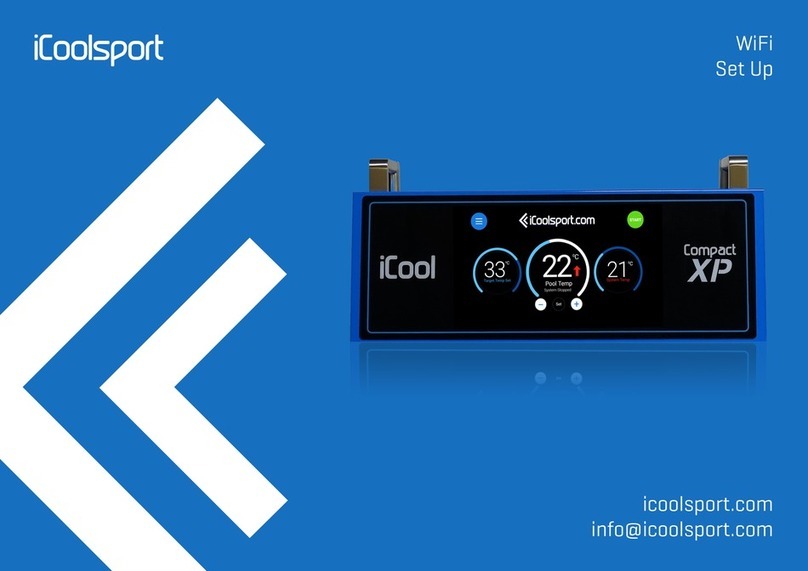
iCoolsport
iCoolsport Compact XP manual
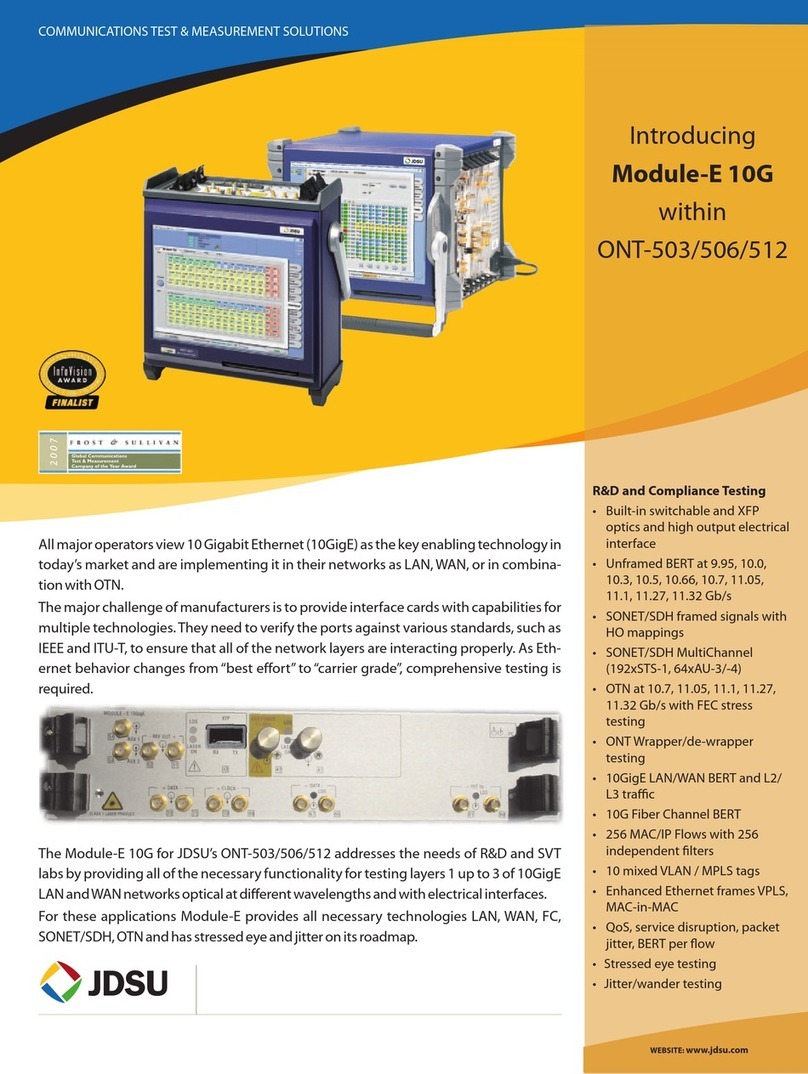
JDS Uniphase
JDS Uniphase Module-E 10G introduction
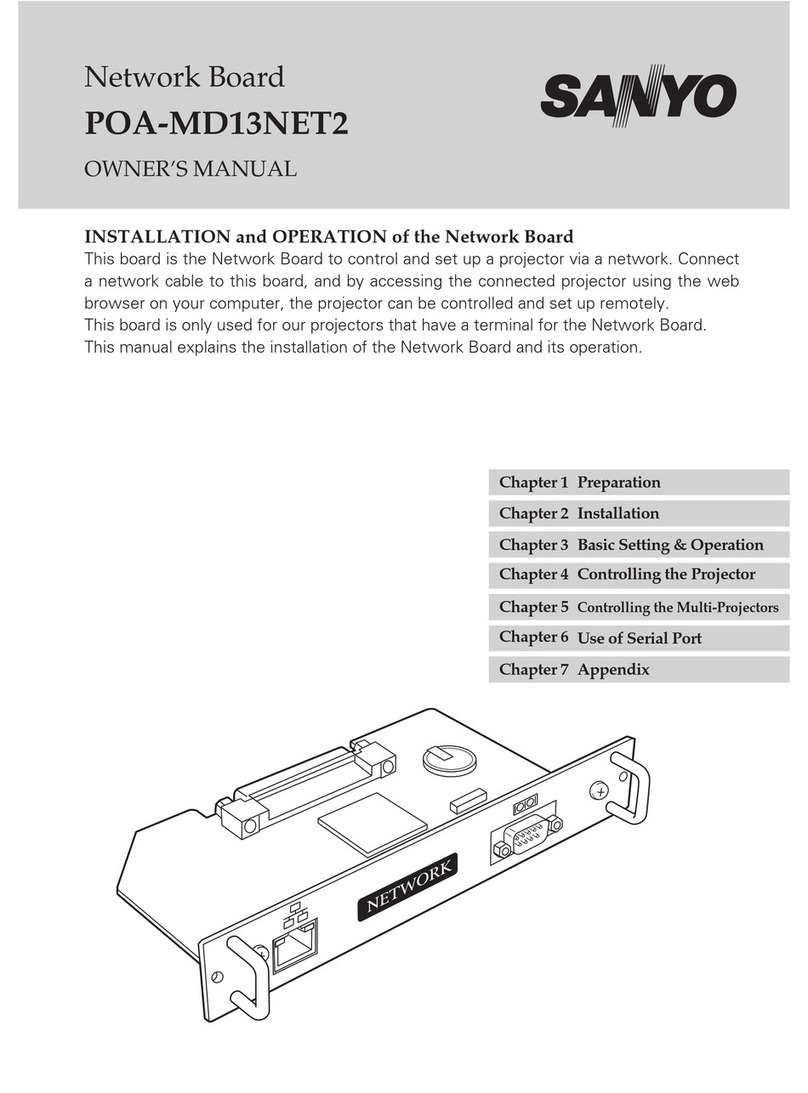
Sanyo
Sanyo PDG-DET100L - SXGA+ DLP Projector owner's manual
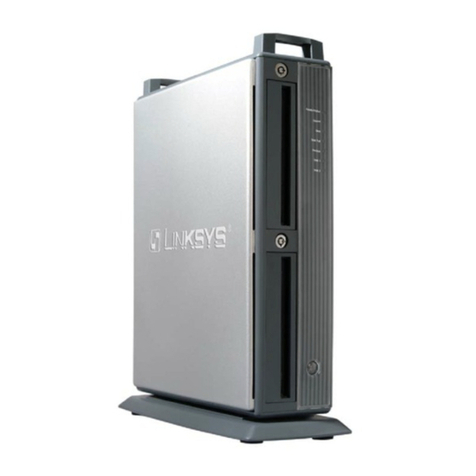
Linksys
Linksys EFG120 - EtherFast Network Attached Storage NAS... Quick installation
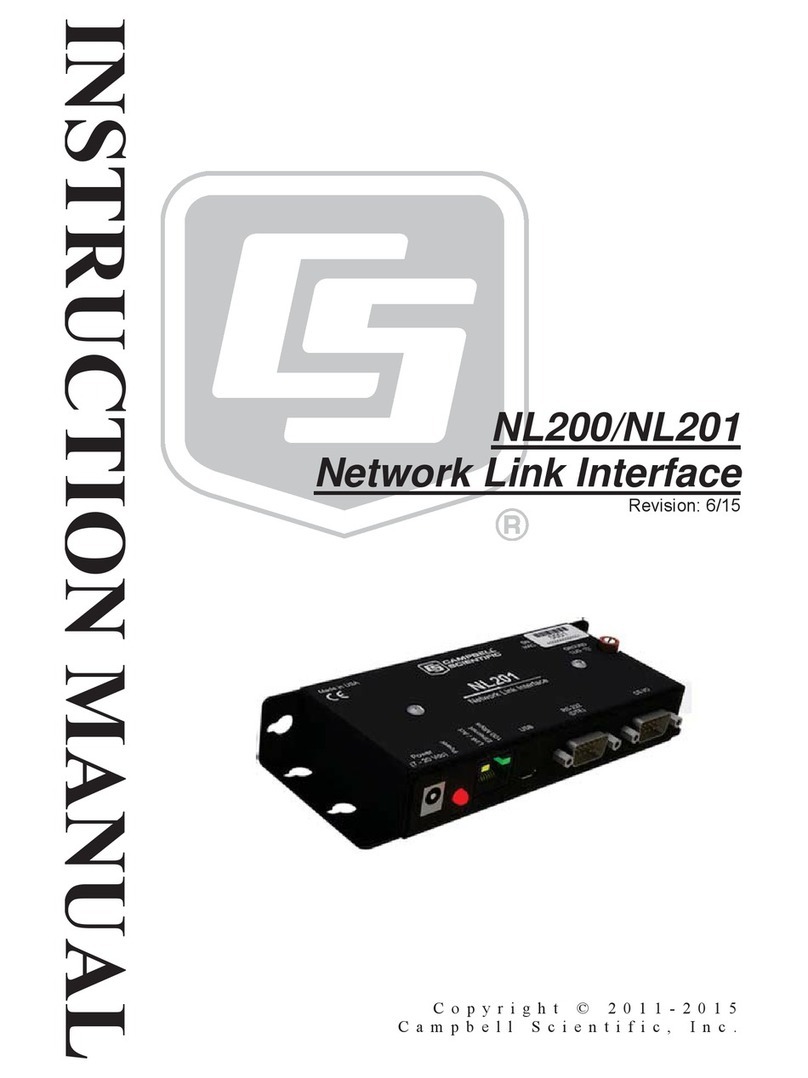
Campbell
Campbell NL200 instruction manual

ZETR
ZETR 25 installation manual

